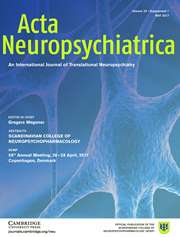Post-traumatic stress disorder (PTSD) is associated with information-processing deficits and a reduction of selective attention, along with hyperarousal and hyper-reactivity to threat- and emotion-related stimuli. PTSD may involve an enhancement in automatic processing and an inability to inhibit automatic processing when required. The predominant neurophysiological model of PTSD has focused on medial prefrontal disruptions during the processing of fear-related stimuli and does not include potential alterations in the explicit inhibitory control of automatic responding. We investigated executive inhibitory control in PTSD during an emotionally neutral (go/no go) response inhibition task in individuals with PTSD (n = 23) and matched healthy controls (n = 23) using functional magnetic resonance imaging. PTSD was associated with diminished inhibitory control and reduced activation of a cortical inhibitory network (particularly right ventrolateral prefrontal cortex), as well as an increase in areas associated with sensory processing (somatosensory and visual cortices) and increased inhibitory task demand (striatum). These findings are consistent with diminished executive inhibitory control in PTSD and may reflect increased stimulus processing, which undermines cortical control mechanisms.
Crossref Citations
This article has been cited by the following publications. This list is generated based on data provided by Crossref.
Blekic, Wivine
Wauthia, Erika
Kornacka, Monika
Kandana Arachchige, Kendra
Lefebvre, Laurent
and
Rossignol, Mandy
2021.
Eye-tracking exploration of inhibitory control in post-traumatic stress disorder: an emotional antisaccade paradigm.
European Journal of Psychotraumatology,
Vol. 12,
Issue. 1,
Noble, Natalie C.
Sendi, Mohammad S.E.
Merker, Julia B.
Linton, Samantha R.
Webber, Theresa K.
Toll, Russel T.
Etkin, Amit
Wu, Wei
Ressler, Kerry J.
and
Seligowski, Antonia V.
2025.
PTSD-related differences in neural connectivity among female trauma survivors.
Biological Psychiatry Global Open Science,
p.
100491.


